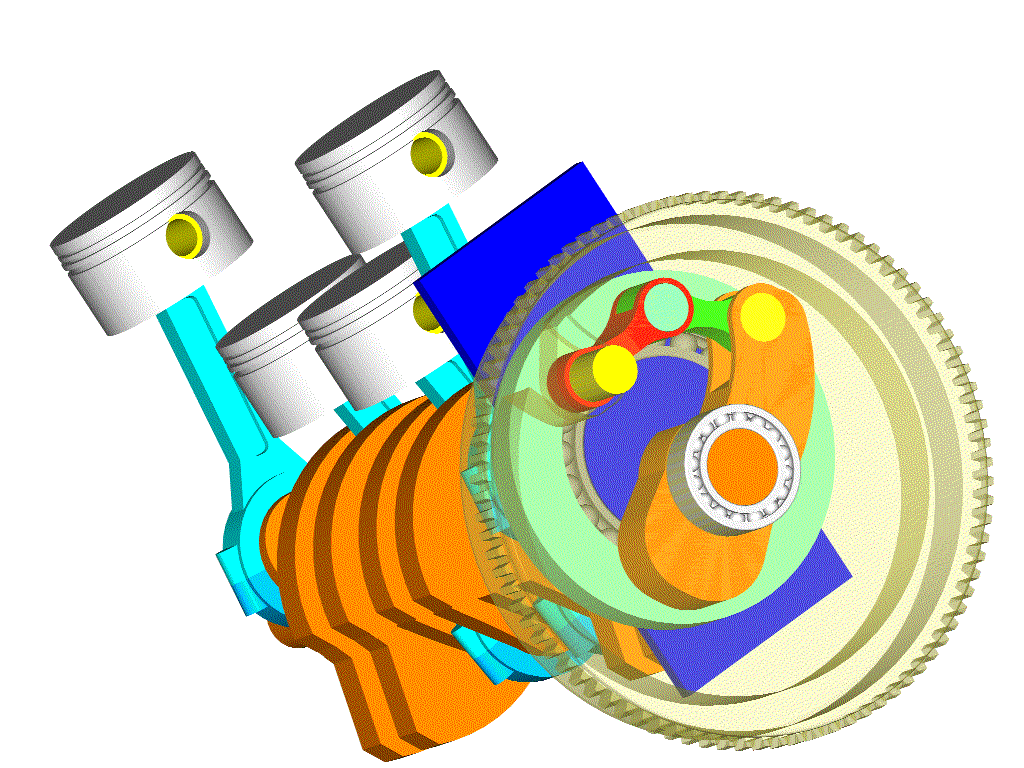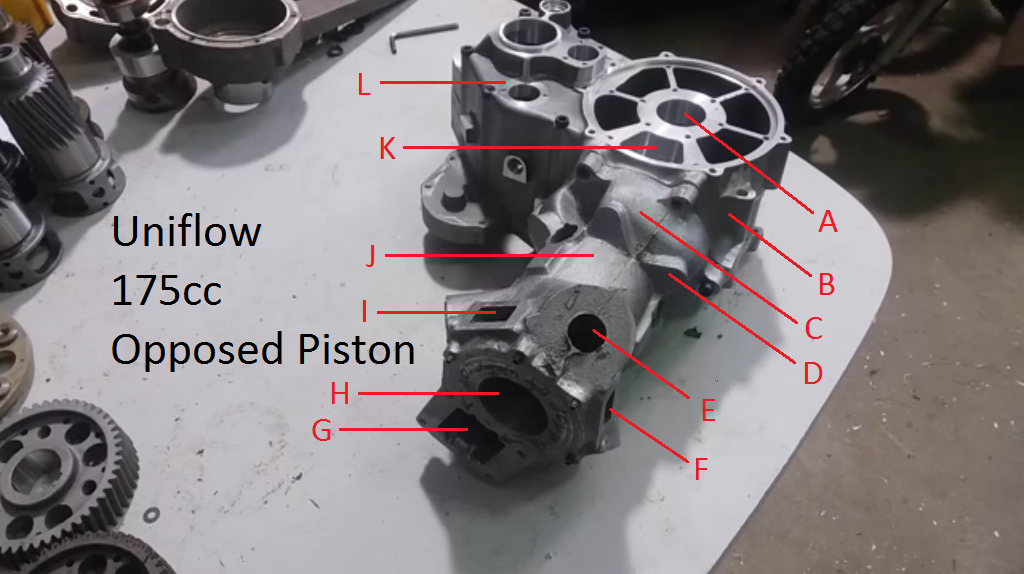Hello Tommy Cookers.
You write:
“all of that is wrong ....
(except for riding in Moto GPs etc - btw how come GP Suzuki and other inlines are 'flat' crank ?)
in the lower 90% of the rpm range the torque events from combustion are far greater than the inertia torque events
ie the conventional even-firing inline four is better at this than is the R1, the TDM, or the conventional triple
'the rider's sense of what the rear tyre is doing' remains (PR-conveniently) unsubstantiated
anyway what matters to the buying public is a traction-control sensor's sense of what the rear tyre is doing”
The straight four with the flat crank needs not a balance shaft to cancel out the inertia moment created by the cross-plane crankshaft.
And the tuning of the exhaust is better / easier / more efficient; some Ferrari V-8 use flat crankshaft (and not crossplane) despite the strong unbalanced inertia force of 2nd order resulting from the arrangement.
Yamaha started their TDM with a flat crankshaft (crankpins at 0 and 0 degrees) and some years later they redesigned the engine shifting the one crankpin by 90 degrees (crankpins at 0 and 90 degrees), shifting also the weights on the two balance shafts; the inertia torque of the latter TDM900 is similar to that of the V2 (at 90 degrees) Ducati.
- Here is how it goes:
When a piston of the flat-crankshaft straight four (which is the most common engine in cars) is at its BDC or TDC, i.e. when the speed of the piston is zero, the speed of the rest three pistons is also zero. This means a zero total kinetic energy of the four pistons.
After 90 degrees of crank rotation, all the four pistons are at their middle stroke, with their speeds at, or near, maximum, i.e. with the total kinetic energy of the four pistons maximized.
So, there is a strong variation of the kinetic energy of the set of the four pistons, two times per crank rotation (the total kinetic energy of the pistons gets zero at 0 and 180 crankshaft degrees (0 is set at the TDC of the first piston) and maximizes at 90 and at 270 crankshaft degrees. This variation of energy is actually what creates the inertia torque.
The crankshaft / flywheel absorb the energy of the pistons when they decelerate, and feed the pistons with energy when they accelerate.
This means that the crankshaft / flywheel have to rotate at a substantially variable speed.
If you put the engine to run without load at some revs, you can measure the angular velocity of the crankshaft / flywheel per degree of rotation; such a measurement says it all.
With the crankshaft / flywheel revving at variable angular velocity, the wheels (driven through the transmission by the crankshaft / flywheel) rotate at variable angular velocity (or at least they try to). To avoid this, springs are added between the flywheel and the gearbox.
So there is problem.
The question is how significant it is.
As the revs increase, the useful torque provided by the engine is, more or less, constant, but the inertia torque increases with revs square.
So, no matter how lightweight the pistons are, if at some X rpm the inertia torque equals to the full-load useful torque of the engine, at 2*X rpm the inertia torque becomes four times stronger than the full-load useful torque of the engine.
That is, if the X rpm you pass to the transmission 100kW useful power and 100kW “idling” (i.e. not making work) inertia power , then at 2*X rpm you pass to the transmission 2*100=200kW useful power and 2*4*100=800kw “idling” power (the revs double, while the inertia torque multiplies by 2^2=4).
I.e. at high revs the “useful” power transmitted to the gearbox is like a “noise” inside the several times stronger “idling” power transmitted to the gearbox.
- Worth to mention: while the instant useful torque (i.e. the troque from the expansion of the high pressure gass in the cylinders) has to do with one only piston (the power stroke completes in one cylinder and then starts and completes in another cylinder, and so on), the inertia torque has to do with all the four pistons (all the four pistons stop together and 90 crankshaft degrees they all, together, move with their maximum speed).
What the V2 / 90 degrees Ducati does?
The kinetic energy of the two pistons is more-or-less constant around a crank rotation (when the one stops, the other moves with its maximum speed). This causes the elimination of the inertia torque. This, in turn, means that the gearbox receives only useful power and not “idling” power.
With the tire receiving pure useful torque, the feeling is much better.
This is the idea behind the “cross-plane” crankshafts of Yamaha R1.
They sacrificed the even firing and the exhaust tuning for the sake of an easier riding / control (feeling).
Unless I am wrong, they were permanent winners in the moto-GP for several years; and this is not an opinion, it is a fact.
For an ordinary car that rarely runs above 3,000 - 4,000rpm, the inertia torque is not a big deal, while an un-even firing would be a big problem (the engine will sound “ill”).
The PatVRA:

combines both “schools”:
it keeps the flat crankshaft, the even firing and the tune exhaust, on one hand, and it filters the inertia torque from not going to the gearbox, on the other hand.
How?
It allows the crankshaft to rev at variable angular speed (along a crankshaft rotation), keeping the primary axle rotating at constant angular speed.
You also write:
“re. the Triumph 'T' crankshaft ......
doesn't the 90 deg piston cancel some of the secondary vibration force sum (as did the 1983 Tenere and the R1) ??
secondaries are greatly underappreciated as resonant vibration sources with solid-mounted engines”
The central piston can take half of the free 2nd order inertia force of the pair of the outer pistons. This is good. But far worse than the even firing triple with the perfect balancing of all inertia forces.
Thanks
Manolis Pattakos




